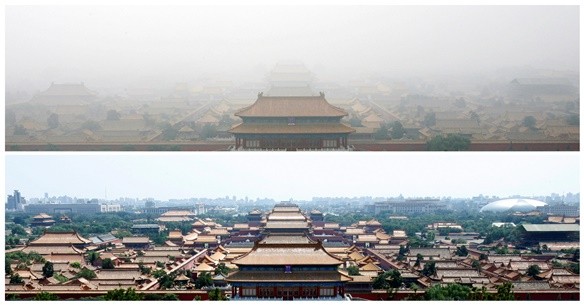China's capital had a literal breath of fresh air November last year because of Beijing's first atmospheric control regulations.
The "APEC blue"--a term which refers to the clean air act that cleared out the thick smog and showed the blue skies for four days straight during the APEC convention on Nov. 1-12, 2014--made it to the first rank of the Clean Air Key Terms of the Being Municipal Environmental Protection Bureau.
The APEC blue act was done to impress the foreign dignitaries that attended the annual APEC summit that was hosted last year by China in its capital, Beijing.
The factors that supported the clean air were the "people's effort and luck." Since the environmental effort was supported by the nearby provinces, Beijing considered taking several measures in decreasing the pollutants that contributed largely to the smog.
Several holidays were granted to local government employees and other workers. The decreased number of vehicles (11.7 million vehicles were off the road) helped in the lessening of heavy traffic and eventually reducing the pollution from vehicular emissions.
Also, construction sites halted operations in most days of the event. This aided in temporarily preventing the spread of airborne pollutants.
About 10,000 factories in and surrounding Beijing ceased operations during the convention, and another 39,000 factories were scheduled to work only for a certain amount of time.
The factories were regularly inspected and visited to ensure that the APEC guidelines were followed.
As for the people's luck, from Nov. 1-3, north winds blew for 36 hours and cleared the pollutants in the air.
Because of these factors, Beijing experienced amazing quality in the air. The good, breathable air was enjoyed by the locals and the city pushed the efforts through by making the APEC blue a normal occurrence.



























